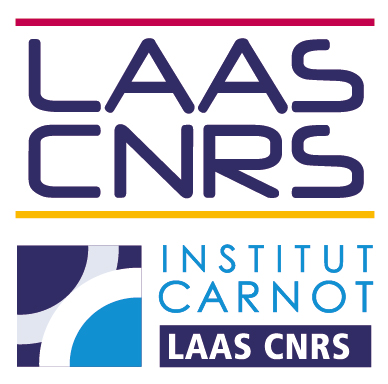Alejandra Ruiz, Tim Kelly and Jose Luis de la Vara
The cost and time associated with developing safety-critical systems can significantly increase because of having to ensure, assure and certify the safety of the system. In addition, the complexity and size of these systems has been growing over recent years. Consequently, there is a need in industry for new design and assurance approaches that, for instance, facilitate and promote product reuse and help support the activities and evidence management of safety assurance. This can lead to a reduction of costs and the time required to develop safety-critical systems, and to easier, more effective and efficient ways to deal with safety assurance and certification. One of the main challenges currently being faced is to make reuse of products among different domains possible. The difficulty of this challenge lies in the existence of differences between the domains in aspects such as safety assurance practices, permissible forms of evidence, and safety regulations. As a result, the whole safety assurance and certification process may have to be re-executed when aiming to reuse a product developed for a given application domain in another, just as for a completely new product. This reduces the return on investment of such reuse. Further, current market trends indicate that safety-critical systems will consist of heterogeneous, dynamic coalitions of systems of systems in the near future. For this type of systems, it is essential to develop sound strategies that help industry to deal with safety assurance and certification in a compositional way. The International Workshop on Next Generation of System Assurance Approaches for Safety-Critical Systems (SASSUR) is intended to explore new ideas on compositional and evolutionary safety assurance and certification. In particular, SASSUR aims to provide a forum for thematic presentations and in-depth discussions about reuse and composition of safety arguments, safety evidence, and contextual information about system components, in a way that makes assurance and certification more cost-effective, precise, and scalable. SASSUR is targeted at bringing together experts, researchers, and practitioners from diverse communities, such as safety and security engineering, certification processes, model-based technologies, software and hardware design, safety-critical systems, and applications communities (railway, aerospace, automotive, health, industrial manufacturing, etc.). The topics of interest include:
- Industrial challenges for cost-effective safety assurance and certification
- Cross-domain product certification
- Integration of process-centric and product-centric assurance
- Compliance management of standards and regulations
- Evidence traceability
- Transparency of the safety assurance and certification processes: metrics and business cases
- Evolutionary approaches for safety and security assurance and certification
- Case-based assurance approaches
- Tools for supporting of safety assurance
- Seamless development tool chain for safety critical
- Evolution of standards and trends on transport regulation
- The next challenges of safety critical development in industry
- Human factors in safety assurance and certification
- COTS or external sourcing management of evidence in safety critical system
- Mixed criticality
The papers at SASSUR 2013 address these topics. The following papers have been accepted:
- Adaptive Safety Arguments and Explanation-Based Learning, which proposes an argumentation approach for adaptive systems in the avionics domain.
- ARRL: A Criterion for Composable Safety and Systems Engineering, which introduces a domain-independent concept for trustworthiness in the scope
of component-based development and assurance in safety-critical systems.
- Confidence in Timing, which deals with assurance of time properties of critical systems, focusing on worst-case execution time.
- Design of a CDD-Based Fault Injection Framework for AUTOSAR Systems, which presents a framework design to assess AUTOSAR systems by means of fault injection.
- Principled Construction of Software Safety Cases, which outlines a set of principles for creating software safety arguments, based on standards and industry best practice.
- Software Composability and Mixed Criticality for Triple Modular Redundant Architectures, which de_nes requirements, highlights issues, and classifies fault containments for extending this type of architectures in the context of composability.
- Towards multi-viewpoint safety contracts, which suggests a new approach for dealing with safety contracts in component-based development of critical systems, in order to address different stakeholders concerns.
- VROOM & cC: a Method to Build Safety Cases for ISO 26262-compliant Product Lines, which presents a method that supports safety argumentation for product-lines by integrating traceable management of commonalities and variabilities and facilitating argument reuse.
Last but not least, we hope that you enjoy SASSUR 2013.
Acknowledgments. We would like to thank the OPENCOS Project (FP7programme), SAFECOMP 2013 organizers, SASSUR 2013 Steering and Program Committees, and the authors of the papers submitted to the workshop for their contribution towards realising SASSUR 201.
July 5, 2013 Alejandra Ruiz Jose Luis de La Vara
Tim Kelly
Program Committee
Fabien Belmonte, Alstom Transport Information Solution
Ronald Blanrue, EUROCOPTER
Markus Borg, Lund University
Marc Born, IKV ++
Sergio Campos, Tecnalia Research & Innovation
Daniela Cancila, CEALIST
Jose Luis de La Vara, Simula Research Laboratory
Javier Diaz, University of Granada
Huascar Espinoza, Tecnalia
John Favaro, Intecs SpA
Ibrahim Habli, University of York
Tim Kelly, University of York
Sunil Nair, Simula Research Labs
Jürgen Niehaus, SafeTRANS
Paolo Panaroni INTECS
Alejandra Ruiz Tecnalia
Mehrdad Sabetzadeh, University of Luxembourg
Fulvio Tagliabo, CRF
Kenji Taguchi, AIST
Martin Wassmuth, EADS
Ji Wu Beihang, University

